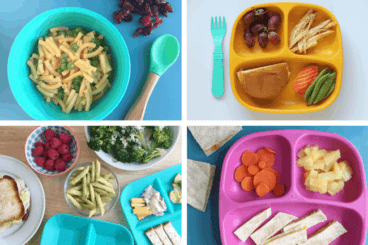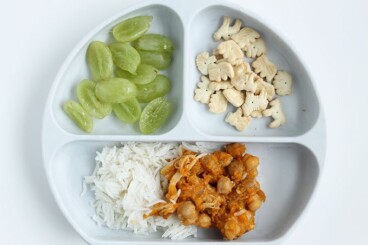Find the best, easy weeknight dinners for family meals with these 30-minutes (or less!) ideas. With options to make them ahead, freeze them for later, and share with kids of any age.
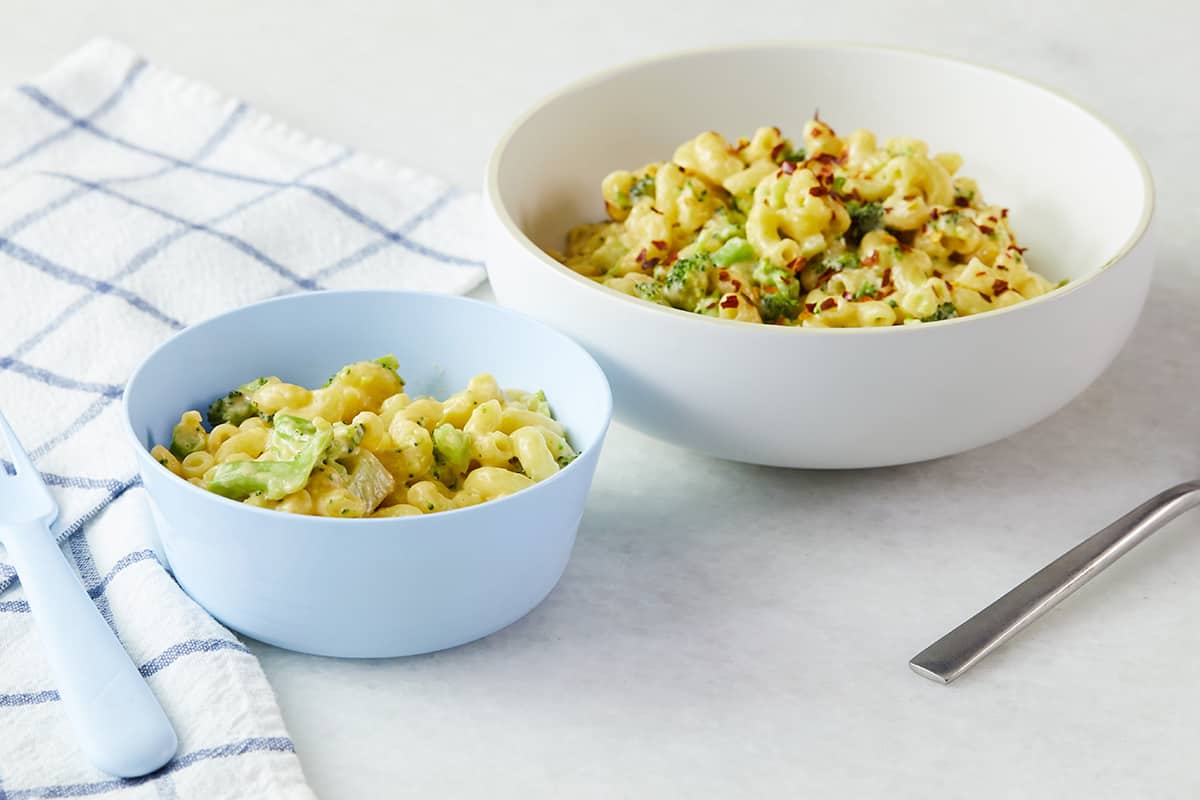
Easy Weeknight Dinners for Family
I know that we’re all looking for easy meals that can be made quickly, so this list includes 15 of our favorites. Each can be enjoyed by both the kids and the adults at the table and are versatile to help you use pantry and fridge staples you might have on hand.
Each recipe here can be made in less than 30 minutes and can be easily rounded out with a simple side. (See ideas at the end.)
I hope these help you feed your family on those busy days—whether you’re all able to eat at the same time or you’re eating in shifts.
(You may also like my book, Dinnertime SOS: 100 Sanity-Saving Meals Parents and Kids will Actually Enjoy.)
My Top Ten Easy Meals
- Broccoli Mac and Cheese
- Pizza Toast
- Butter Chicken
- Pizza Muffins
- Cauliflower Alfredo
- Spinach Grilled Cheese
- Black Bean Soup
- Sweet Potato Quesadillas
- Hamburger Helper
- Toddler Smoothies
Table of Contents
- Easy Weeknight Dinners for Family
- My Top Ten Easy Meals
- One-Pot Broccoli Mac and Cheese
- Cherry Tomato Pasta
- Zucchini Pasta Sauce
- Butternut Squash Pasta with Veggies and Sausage
- Extra-Veggie Minestrone
- Alphabet Soup
- Butter Chicken
- Chicken in Tomato Sauce
- Chicken Noodle Soup
- Snack Dinner
- Taco Buffet
- Vegetable Stir Fry with Tofu
- 20-Minute Stir Fry Noodles
- Sheet Pan Quesadillas
- Pizza Rolls with Cheese
- Sheet Pan Nachos
- Quinoa Fried Rice
- How to Store and Reheat Weeknight Dinners
- Easy Sides to Add
- How to Modify for Babies and Toddlers
- Best Tips for Success
- Easy Weeknight Dinners for Family (One-Pot Mac and Cheese) Recipe
Your toddler won’t eat? Help is here!
Sign up for our email updates to get tips and ideas sent to your inbox.
One-Pot Broccoli Mac and Cheese
With a super easy method that only requires one pot, you can have this easy Broccoli Mac and Cheese ready for family dinner—or a kids meal. It cooks in about 20 minutes and has a solid dose of nutrients and deliciousness.


Cherry Tomato Pasta
Pick up a pint of cherry tomatoes of any kind and make this super easy no-cook sauce to go with a pound of pasta. It’s fresh, fast, and easy to modify as needed.

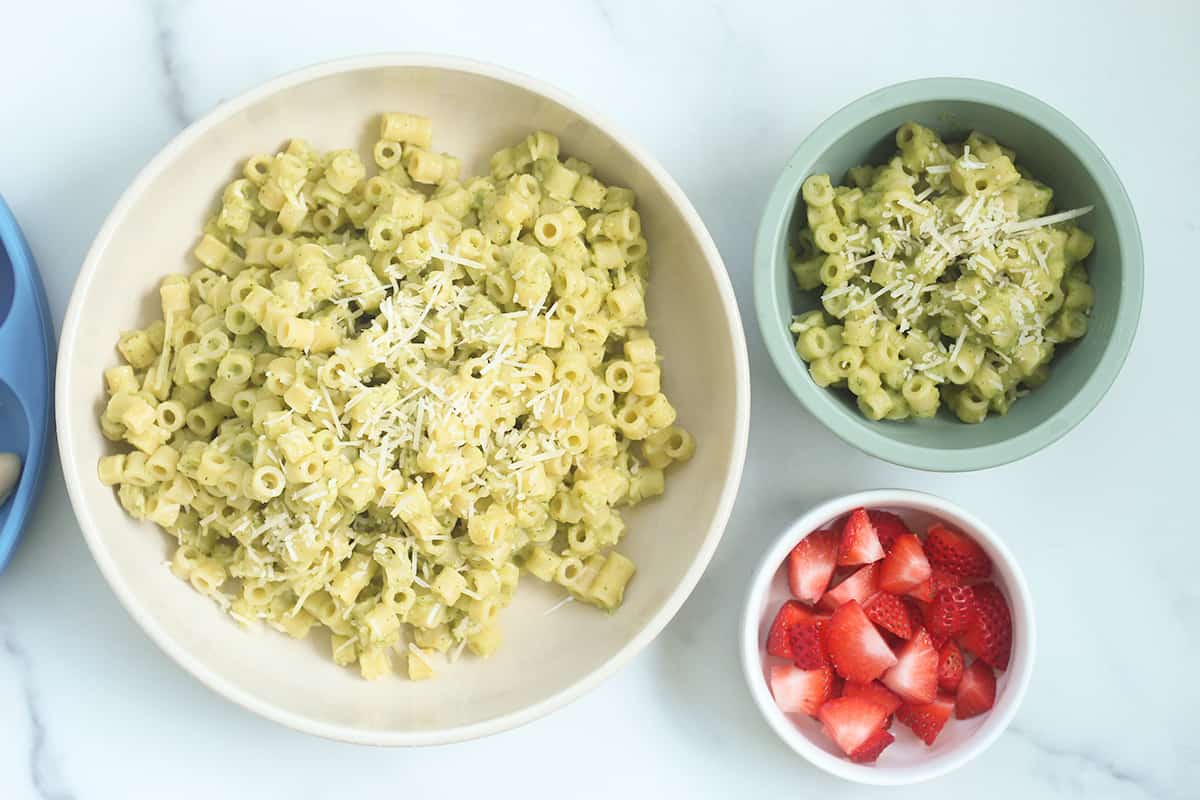
Zucchini Pasta Sauce
With a base of zucchini and white beans, this vegetarian pasta sauce is satisfying—and you can vary the flavor by adding basil, cheese, and spices.


Butternut Squash Pasta with Veggies and Sausage
With an easy cooking method that takes less than 20 minutes, this Butternut Squash Pasta is a healthy and yummy family dinner. There are a few variations so you can customize it for your family according to preferences and any allergies you may have!

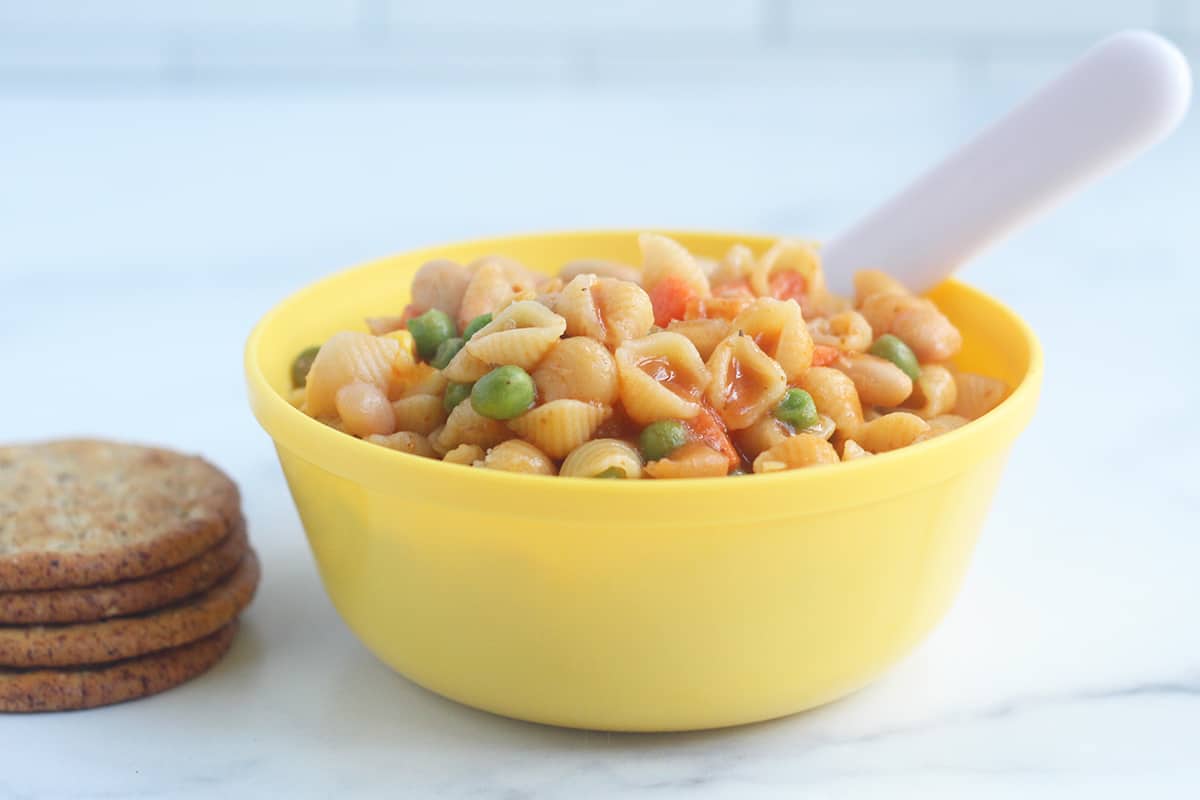
Extra-Veggie Minestrone
Cozy comfort food, here we come. This easy Minestrone is a perfect pair for cheese and crackers and it loaded with both veggies and vegetarian protein.


Alphabet Soup
Cook up this cozy Alphabet Soup recipe the next time you want an easy meal that’s also fun! ABC pasta is a perfect addition to this kid-friendly soup—and you can tailor the veggies to the likes (or dislikes!) of your own kiddos. It’s so versatile!

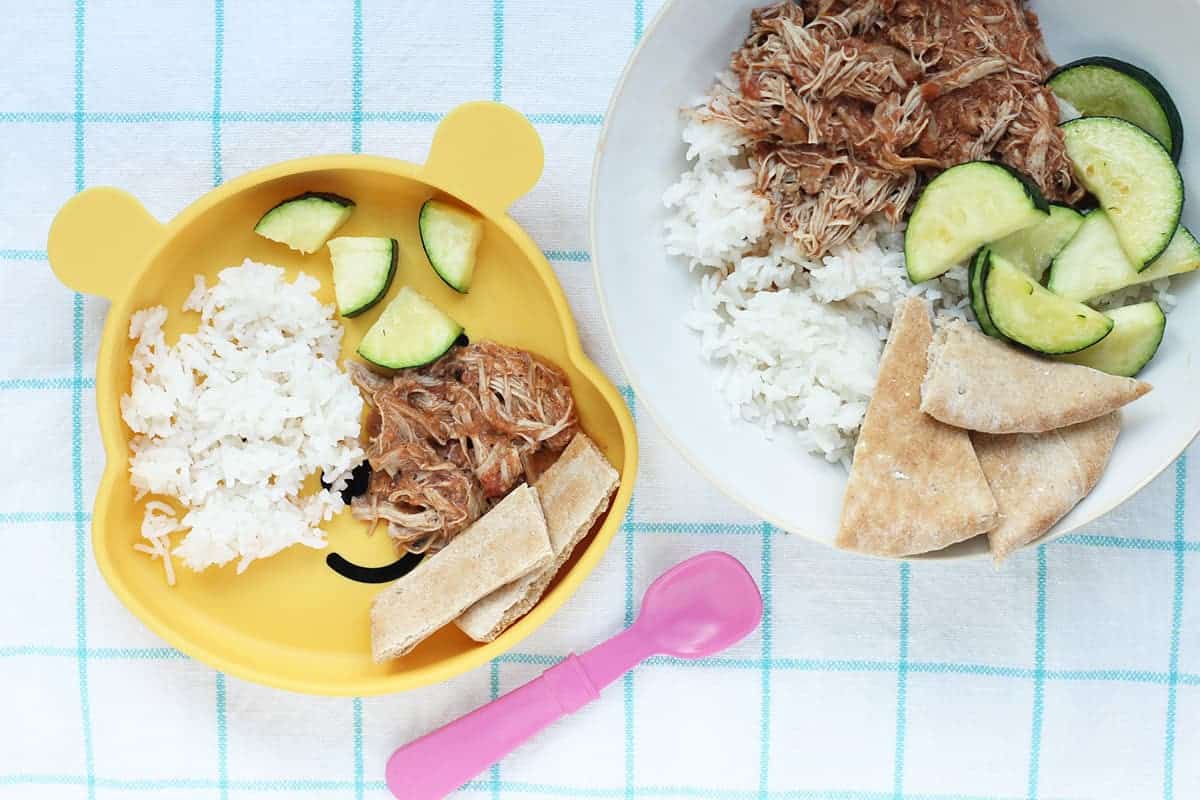
Butter Chicken
Serve this flavorful and tender chicken with rice, pita, and cucumber for a delicious meal for the entire family.

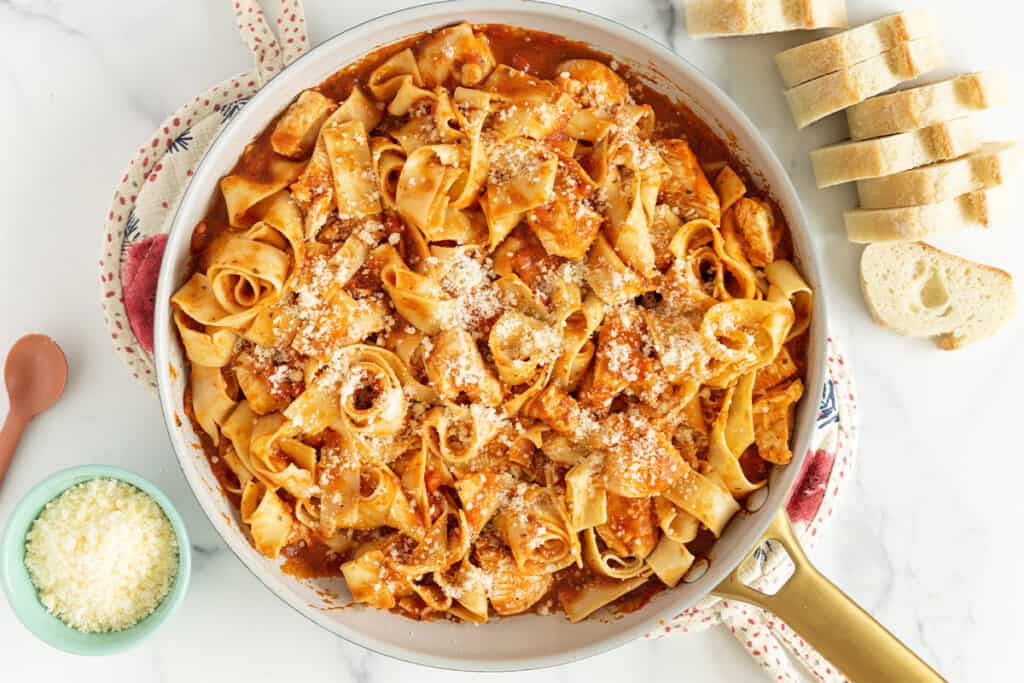
Chicken in Tomato Sauce
With an easy cooking method, this no-fuss method for making chicken is one of my weeknight go-tos.


Chicken Noodle Soup
There’s nothing like a bowl of cozy, comforting Chicken Noodle Soup—especially when it’s one that’s easy to make in about 30 minutes. This version is quick to make and is one of our one of our very favorite soups for kids…and family dinners to share.

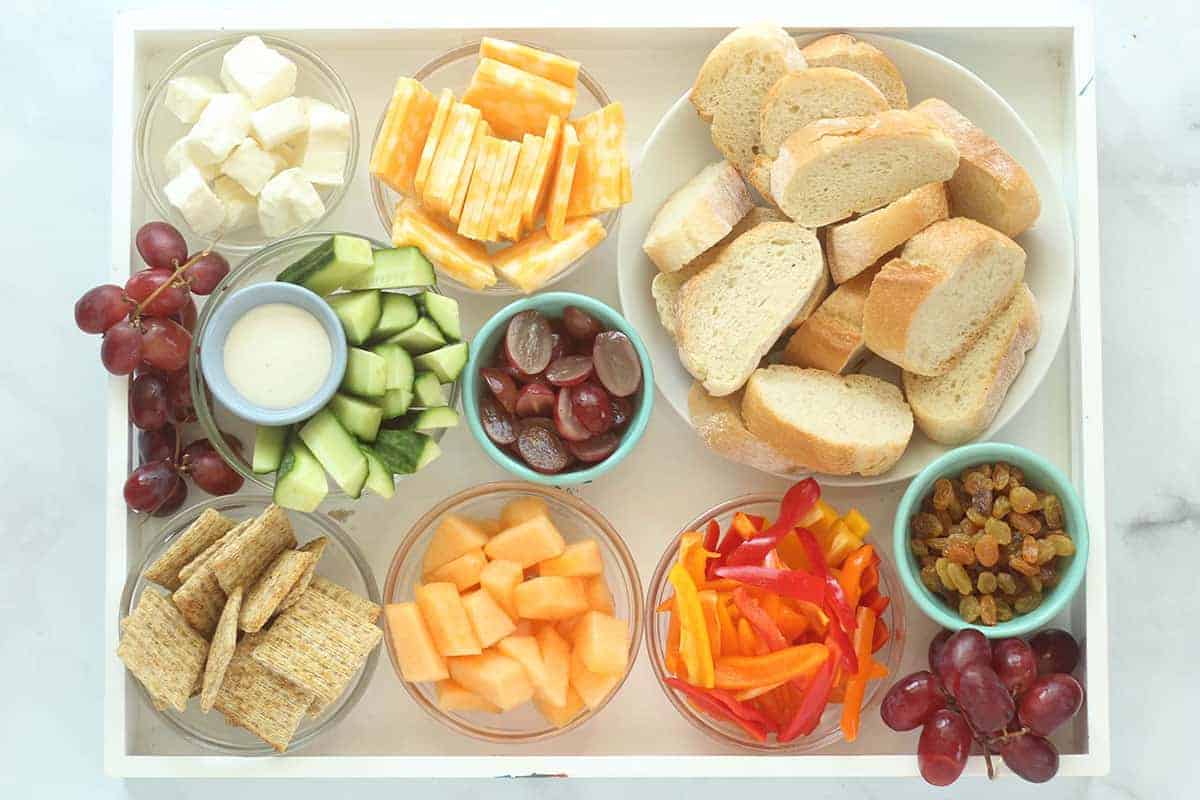
Snack Dinner
The next time you just cannot summon the energy to cook a meal…Snack Dinner to the rescue! I love this easy concept because it’s so easy to make one big platter for the whole family to share, or individual plates for each kiddo. And: You can use up so many items you already have in the house!

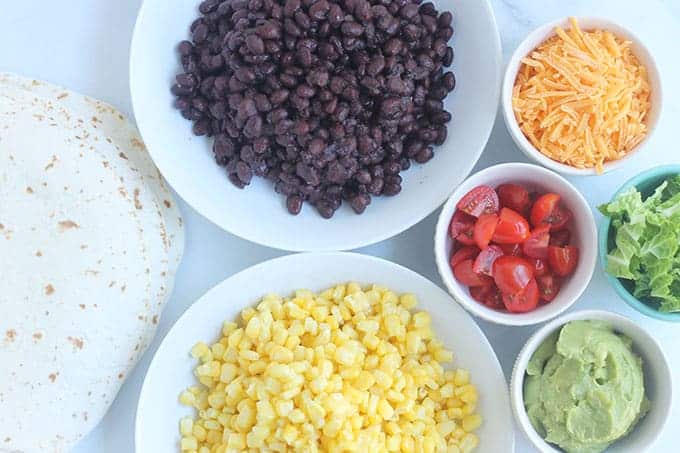
Taco Buffet
Serve up an easy Taco Buffet without any cooking or involved prep work and have an easy family dinner on the table in minutes. This taco bar is one of my very favorite family meals and it’s so easy to customize!

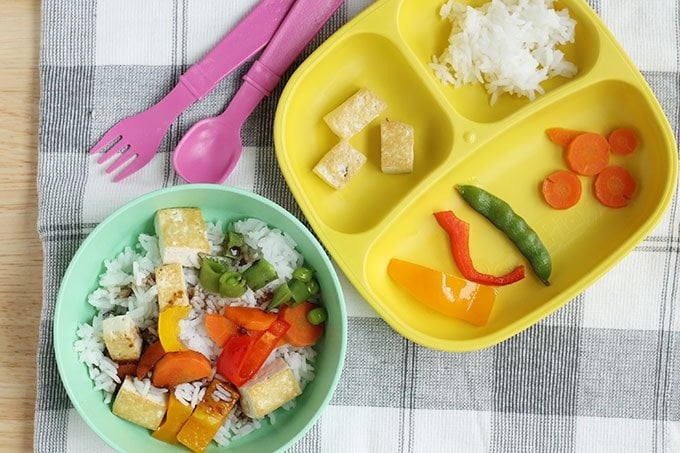
Vegetable Stir Fry with Tofu
For those nights when you want a super quick and healthy family dinner, this Healthy Vegetable Stir Fry should be on your must-make list. It comes together in about 20 minutes and it’s super easy to customize for your kids!


20-Minute Stir Fry Noodles
Use rice noodles or spaghetti in this easy skillet dinner and whichever quick-cooking veggies your family prefers. You can even add some Sesame Tofu to the pan before you start the veggies to add in a protein.


Sheet Pan Quesadillas
Learn how to make a big batch of quesadillas for the family all at the same time with these easy oven-baked Sheet Pan Black Bean Quesadillas. They’re flavorful, straight-forward, and so delish!


Pizza Rolls with Cheese
This Mini Spinach and Cheese Pizza Roll recipe is packed with nutrition—and even greens!—but the cheese, and silly spiral shape makes them much more appeal to toddlers and big kids. And: You can make them in about 30 minutes and stash them in the fridge or freezer for future meals.

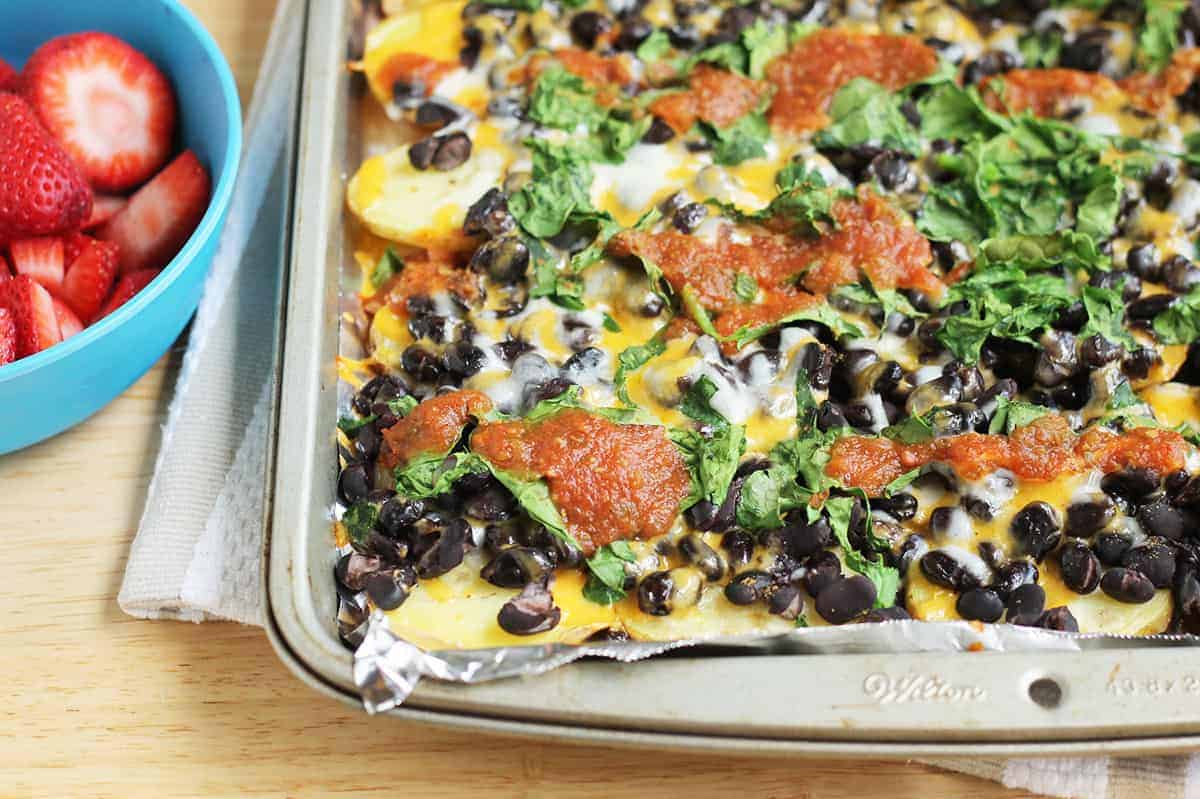
Sheet Pan Nachos
These healthy Baked Sheet Pan Nachos have a tender potato base and are topped with black beans, cheese, salsa and (optional!) spinach. They’re a total family dinner hit—and are so easy to prep ahead of time to make getting dinner on the table possible on even busy days.


Quinoa Fried Rice
Frozen and pre-cut veggies make prep for this recipe a breeze.

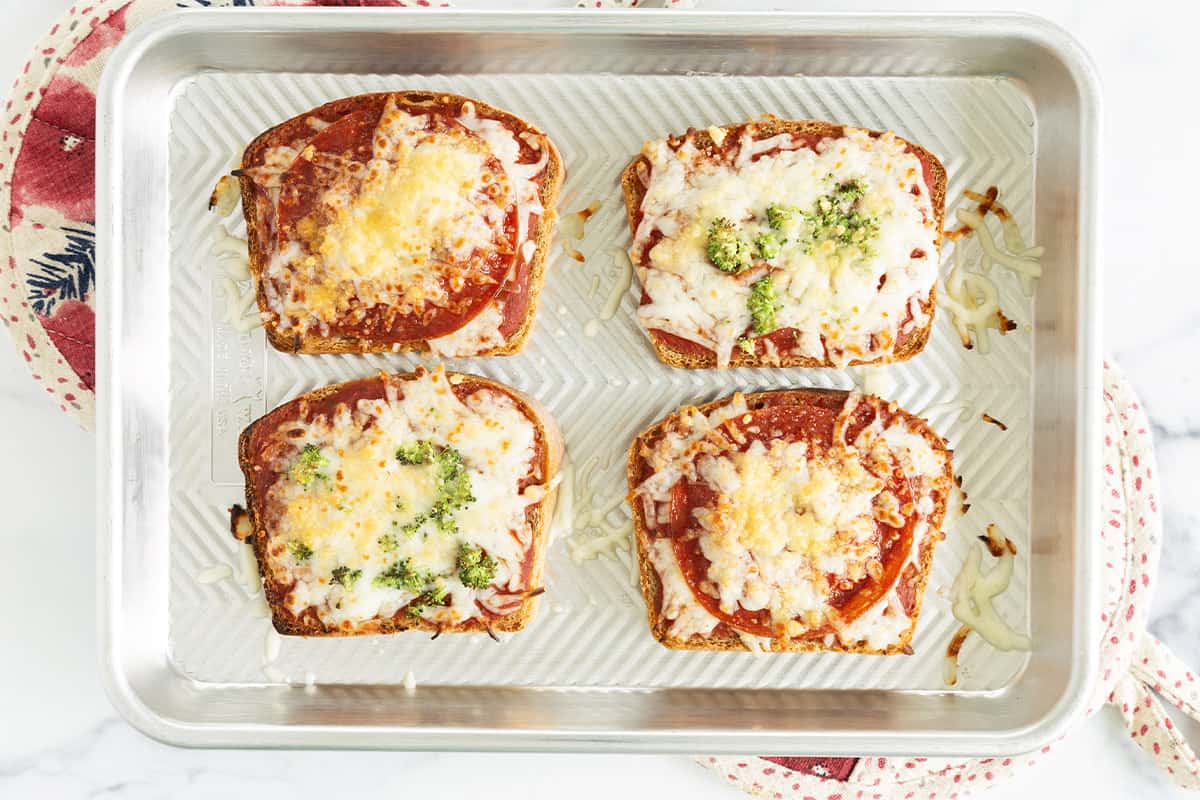
easy pizza toast
This is the fastest way to get the flavors we love of pizza, with less work … all in about 15 minutes!


Pasta in brodo (pasta in broth)
Learn how to make the easiest, yummiest Pasta in Brodo (broth) as a delicious meal to share with the kids. It’s nutritious, fast, and packed with delicious flavor.

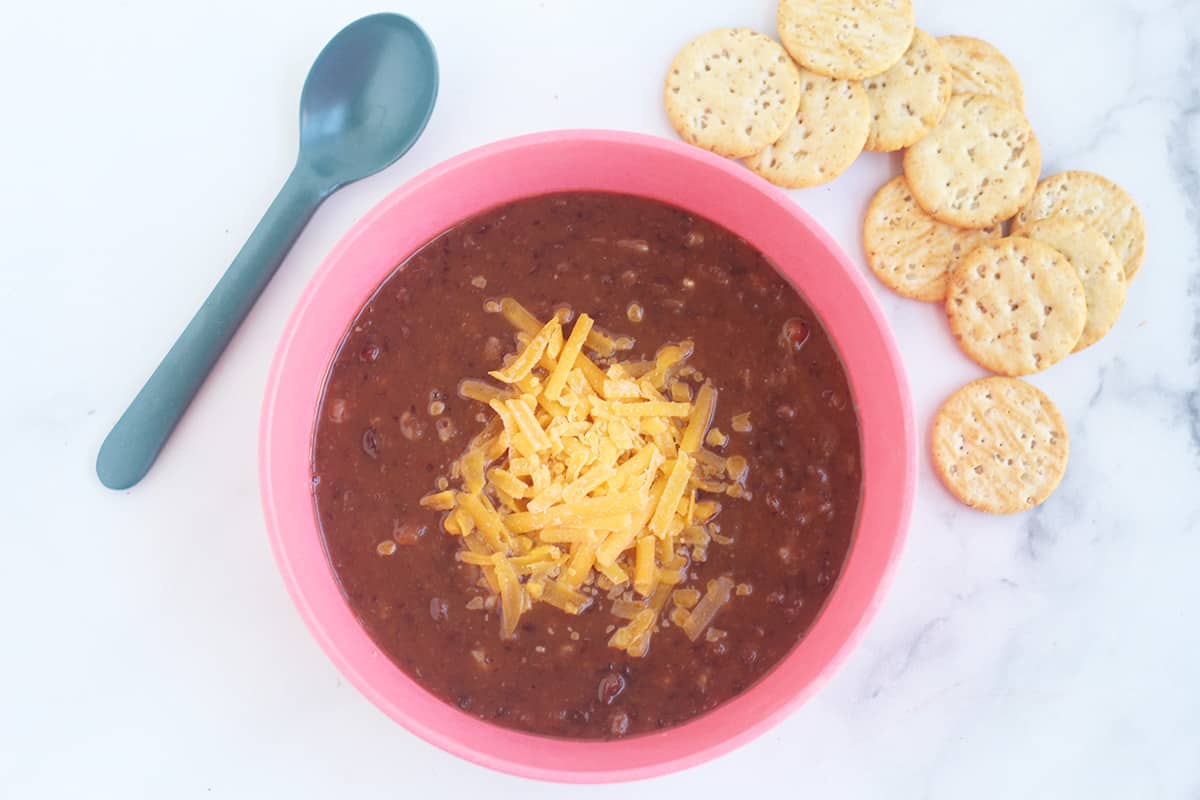
slow cooker black bean soup
This version of Slow Cooker Black Bean Soup is easy, nutritious, and really yummy. I love that it has veggies blended in and that it’s easy for me to throw together even when I’m in a rush!


Orzotto with Peas
With the creamy texture of risotto but a much faster cook time and an easier method, this Orzotto with peas is a favorite quick family dinner.


Creamy Chicken Pasta
Creamy Chicken Pasta with veggies that blend right into the sauce? Win! This pasta recipe is legit delicious and so crazy comforting. Plus, you can make the sauce ahead and take some shortcuts along the way. Win-win!


homemade hamburger helper
One pot and under 30 minutes? Yes! This homemade Hamburger Helper recipe is a fast dinner option that’s satisfying, comforting, and so darn delicious.

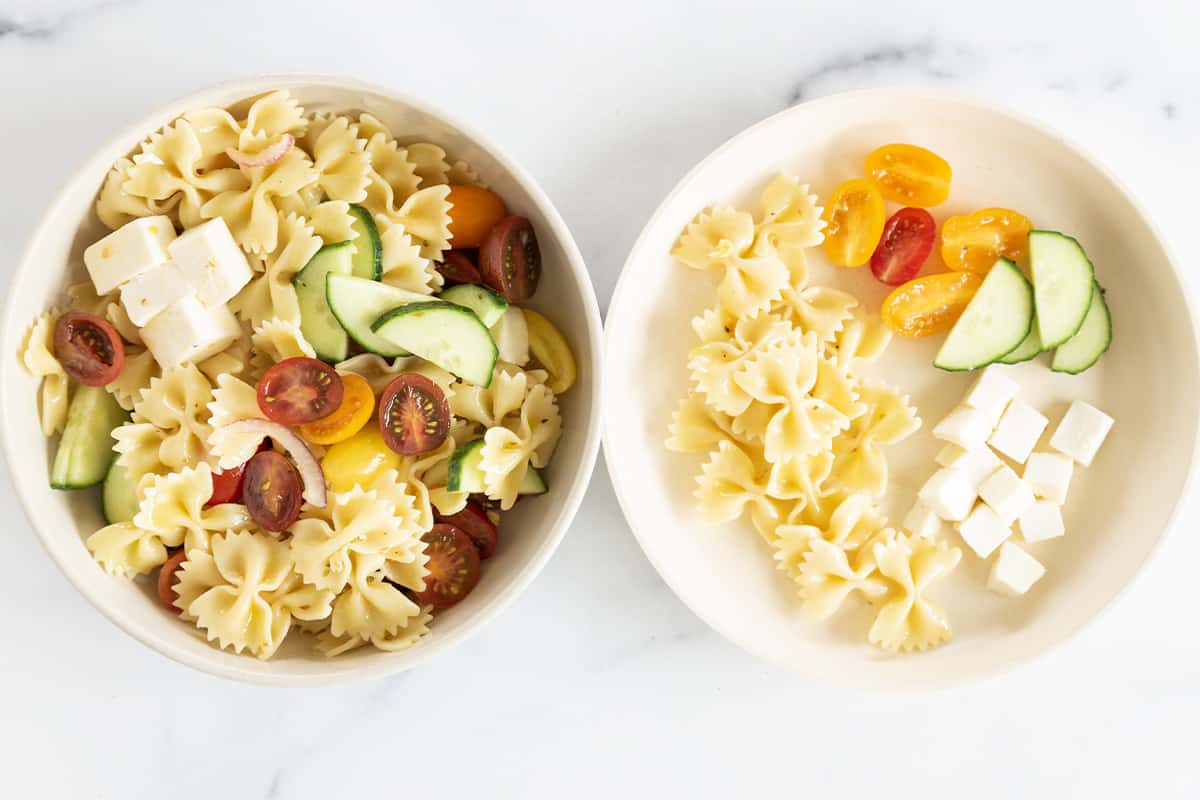
best easy pasta salad
The beauty of this method is you can swap ingredients and dressings in an out to make it your own. You can make it more or less complicated as you like.

How to Store and Reheat Weeknight Dinners
You can store these meals in the fridge, either as leftovers or made ahead, for 3-5 days in the fridge. To reheat, portion into a heat-safe bowl or plate and warm in the microwave for 30-60 seconds.
With any pasta that seems to have firmed up in the fridge, sprinkle with a little water before heating.
Easy Sides to Add
Round out any easy weeknight meal for your family with an easy side dish such as:
- Salad kit (my family particularly loves Caesar salad)
- Applesauce
- Thinly sliced apples, pears, or peaches
- Crackers and cheese
- Sliced bread and butter
- Warmed frozen veggies
- Canned fruit
How to Modify for Babies and Toddlers
Use a knife or kitchen scissors to dice up any of these meals for a baby eating finger foods or for a toddler. You can also shred chicken as needed, and cut quesadillas, pizza rolls, or bread into strips for easier biting and chewing.
Best Tips for Success
- Try serving meals family-style and let the kids have a little more power over what goes onto their plate (which can help improve mealtime dynamics if they’ve been a struggle).
- Prep one veggie on the weekend so it’s ready to go during the week.
- Double any of the meals (except the Snack Dinner) and stash into the freezer for a future week.
Related Recipes
I’d love to hear your feedback on these ideas, so please comment below to share!

Easy Weeknight Dinners for Family (One-Pot Mac and Cheese)
Ingredients
- 2 cups milk (I use whole milk)
- 1 1/2 cups reduced sodium chicken or vegetable broth (or water)
- 8 ounces elbow or mini shell pasta
- 1/2 teaspoon salt
- 10 ounces frozen broccoli or peas (optional)
- 1 cup shredded cheddar cheese (feel free to double this to make it even cheesier)
- 1 tablespoon unsalted butter
- 1 tablespoon cream cheese
- 1/4 teaspoon onion powder (optional)
Instructions
- Add the broth and milk to a large pot set over high heat. Bring just to a boil, then reduce to medium-high.
- Stir in the pasta and salt, and simmer for 10-12 minutes, stirring occasionally or until the pasta is just soft. (The liquid will not be totally absorbed and that is okay—it will be by the end of the process!)
- Meanwhile, steam or otherwise warm the broccoli or peas if using. Drain. Cut up the broccoli, if using.
- Turn the heat off under the pasta and stir the cheese, broccoli. butter, cream cheese, and salt into the mixture. Taste and season with additional salt as needed. Serve.
Video
Notes
- Store in an airtight container in the fridge for 3-5 days. Warm for 30-60 seconds, or until warmed through, in the microwave.
- The size of the pasta you use may alter the cooking time slightly. This recipe was tested with elbow pasta, so any kind that’s a similar size should work the same.
- I prefer to use steam-in-the-bag frozen broccoli to cut down on pots, but you can also steam fresh or regular frozen broccoli florets in a pot fitted with a steamer basket.
- This is very filling, so I usually don’t make a full pound of pasta. If you’d like to, you can click the “2x” in the recipe card to adjust it up.
- Add the optional spices to add more flavor as desired. Adults may also like to top their serving with crushed red pepper or hot sauce.
- See the post for more easy dinner ideas.
Nutrition
This post was first published November 2022.

